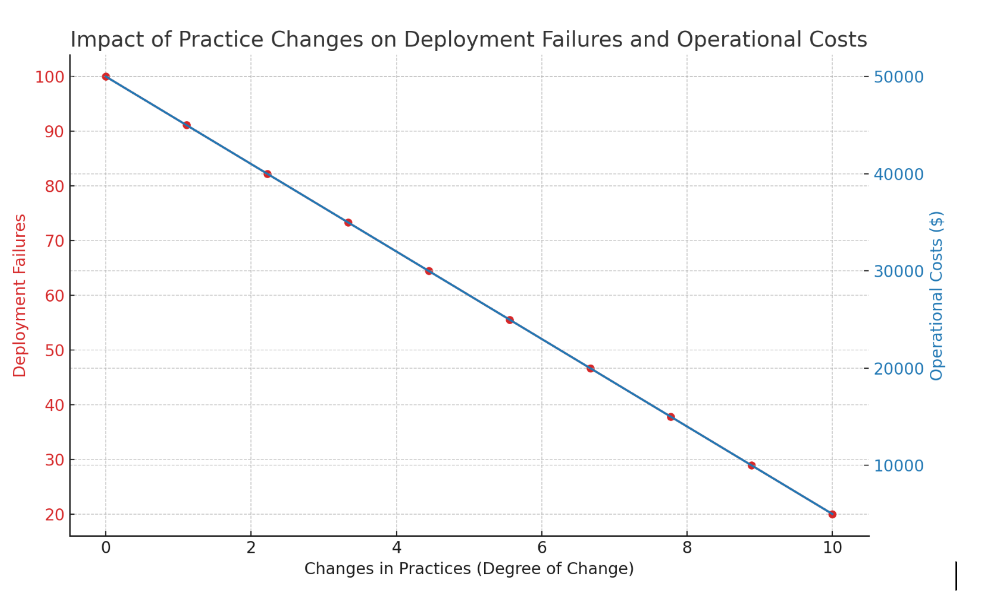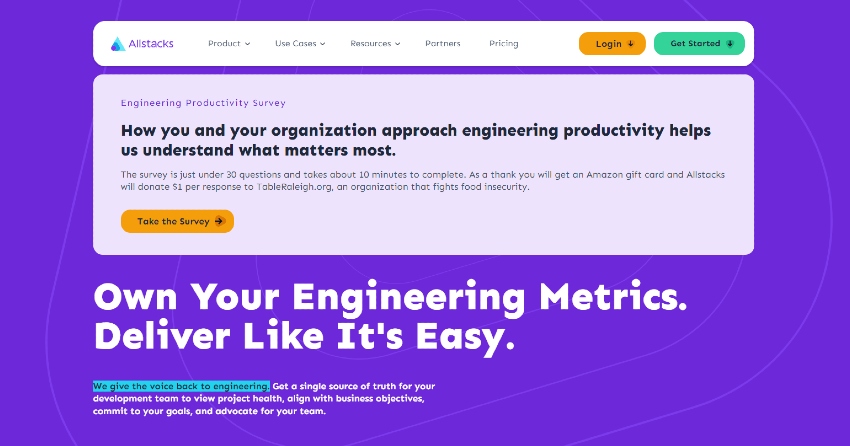Address
304 North Cardinal St.
Dorchester Center, MA 02124
Work Hours
Monday to Friday: 7AM - 7PM
Weekend: 10AM - 5PM
Address
304 North Cardinal St.
Dorchester Center, MA 02124
Work Hours
Monday to Friday: 7AM - 7PM
Weekend: 10AM - 5PM

Ever felt like you’re navigating the complex world of software development without a compass? That’s where DevOps Research and Assessment (DORA) metrics come in —not just as your compass but as your GPS to engineering excellence. These metrics have revolutionized how DevOps teams operate by illuminating the path to enhanced visibility, data-driven improvements, and decision-making prowess.
DORA offers a set of metrics that act as guiding principles for engineering teams striving for top notch performance. These metrics include;

Velocity and stability are the twin pillars of engineering productivity. The first two metrics zoom in on your team’s speed, while the last pair gauge its resilience. Born from years of meticulous research, DORA metrics strip away guesswork, allowing you to manage your company’s value stream with unmatched clarity and align engineering feats directly with business objectives. Let’s dive into what these metrics signify at every level of performance and how they can transform challenges into achievements.
Imagine a world where every engineering project hits its mark without delays, budget overruns, or burnout. Even the best teams can face challenges, but it is the low-performing teams that feel these pressures most acutely. These teams often encounter significant roadblocks, from adopting modern technologies late to being slowed down by outdated processes. The cost? Not just in dollars —though large tech companies with low-performing teams spend over a billion annually on rework —but in missed opportunities and customer dissatisfaction.

Taking a Deeper Dive into Performance and DORA Metrics
The metrics provided by DORA serve as a guiding light, the teams navigating seas towards smoother waters. Let us look at these metrics in the context of teams facing performance challenges:
Grasping these metrics marks the first important phase in steering the ship in a new direction.
Deriving Insights from Real World Scenarios: Reflect on how a prominent global online retailer streamlined its deployment procedures slashing time from months to weeks while significantly reducing its rate of change failures. The secret? Embracing automation. Nurturing a culture centered on learning and growth.

Strategies and Solutions
In the realm of engineering teams that fall in the range of performance often face a moment. They exhibit characteristics of both higher performing teams. These teams, though experienced in their processes, often encounter obstacles that hinder their progress towards achieving top-tier performance. The key difference lies not in their abilities. In their willingness to adapt to ideas and advancements.

Ai Generated Image highlighting the journey towards corporate excellence.
Deployment Frequency: Bridging Gaps with Consistency
Medium-performing teams typically achieve code deployment at a pace ranging from monthly to once every six months. This rhythm, while steady, suggests room for enhancing efficiency through more frequent and consistent release. Adopting agile methodologies and automating deployment processes can significantly shorten release cycles, enabling teams to respond to market changes with agility.
Lead Time for Changes: Accelerating from idea to Implementation
The time it takes these teams to transition from committing a change to deploying it also mirrors their deployment frequency. This interval is crucial for measuring a team’s velocity and efficiency. Streamlining workflows with tools like Jira or Azure DevOps, integrating continuous integration and delivery (CI/CD) pipe, and fostering a culture of continuous improvement can drastically reduce this lead time.
Time to Restore Service: Minimizing Downtime, Maximizing Reliability
When disruptions occur, medium-performing teams often require anywhere from a day to a week to restore services fully. This recovery time is pivotal for maintaining customer trust and operational continuity. Implementing robust monitoring and alerting systems, coupled with well-defined incident response plan, can improve resilience, and reduce mean time to recovery.

Reducing Failure Rates; Minimizing Risks with Proactive Steps
The fact that deployment failures range from 16% to 30% highlights the opportunity to improve both code quality and deployment success rates. Implementing strategies, like code evaluations, automated testing and feature flag usage can significantly reduce the chances of deployment mishaps.
To transcend the status quo, medium performing teams are encouraged to:
Elevating the game in DevOps, high-performing teams are the benchmark of efficiency, precision, and minimal downtime. These teams have harnessed the power of early testing, targeted task management, and proactive UI feedback to maintain a high velocity of delivery.

Integrating non-functional requirements from the get-go, these teams leverage every tool, technique, and talent at their disposal. Their resourcefulness ensures the delivery pipeline flows smoothly, continuously, and swiftly, demonstrating what it truly means to operate at peak performance.
Key Metrics Defining High Performance:
To elevate their performance from good to exceptional these teams prioritize innovation and enhancement. They eagerly adopt innovative technologies and approaches constantly seeking strategies to expand their capabilities. Through fostering a culture of education and trial and error they guarantee that their methods and structures are adaptable, fine-tuned for efficiency and aligned with the changing demands of the industry.
Enhancing Team Effectiveness:
High-performing engineering teams establish the benchmark for quality in DevOps. Through a dedication to effectiveness, deployment, and durability they not only attain remarkable outcomes but also lay the groundwork for ongoing progress and enhancement. As these teams’ gaze towards the future, the transition from high to top notch performance is characterized by a dedication to creativity, expandability, and an unyielding quest for perfection.
Elite engineering teams stand at the pinnacle of performance, demonstrating a harmonious blend of clear role understanding, extensive automation, and a deep-seated culture of innovation and critical thinking. Their psychological edge, marked by a proactive and independent mindset, synergizes perfectly with their technical prowess, fostering an environment where teamwork and continuous learning are not just encouraged but celebrated.

Metrics Defining Elite Status:
Reaching and upholding a top tier position requires a drive for perfection by getting better, having regular evaluations, and staying updated with the newest technologies. This path involves embracing a mindset of trying things, working together and always aiming to improve operations and boost customer interaction.
Elite-performing engineering teams redefine what is possible in software development, setting benchmarks that inspire the entire industry. Their approach —characterized by rapid deployment, swift recovery, minimal failures, and a culture steeped in continuous learning and innovation —ensures they not only meet but exceed the highest expectations. By embodying these principles, any team can embark on the journey from high performance to elite, unlocking new levels of success and satisfaction.
Elevating Performance: Strategies for Achieving Elite Status
The journey to cultivating an elite engineering team embodies the quest for operational excellence, where efficiency, speed, and quality converge to deliver unparalleled value. Recognized for their agility, elite teams deploy ode with remarkable frequency, significantly outpacing their counterparts, as evidenced by the State of DevOps report. They Achieve rapid deployment, swift recovery from service interruptions, and maintain impressively low change failure rates, setting a high bar for performance standards.
Strategies for Transformation:
Navigating Towards Excellence:
While the aspiration for an entirely elite team may seem ambitious, substantial progress is achievable through targeted strategies and a commitment to continuous improvement. By refraining from shortcutting processes and maintaining a keep focus on refining team dynamics and embracing best practices, engineering teams can steadily advance from their current state toward elite performance. This transition is not a competition, but a strategic evolution underscored by the invaluable role of positive feedback loops in fostering development excellence.
Transforming your engineering teams from their current performance levels to elite status is a strategic journey filled with opportunities for growth, innovation, and impact. By implementing these targeted strategies, fostering a culture of continuous improvement, and leveraging technology to its fullest potential, you can significantly enhance your team’s performance and contribute to your organization’s success. Embrace this journey with the support of Allstacks, and discover the transformative impact of excellence in engineering.

Transform your engineering teams from low to elite performance with Allstacks’ DORA DevOps Dashboard. This tool does not just track metrics; it unlocks actionable insights and benchmarks your organization against industry peers, setting clear paths for improvement with DORA-driven KPIs and alerts.

Key Features:
Allstacks offers more than visibility; it provides a strategy for predictable and accelerated value delivery. Discover how our dashboard ca guide your teams to excellence.
Explore Allstacks:
Ready to see the difference? Request as in-person demo or start a free trial and begin your journey to elite performance today. You can also click here to try our guided demo.